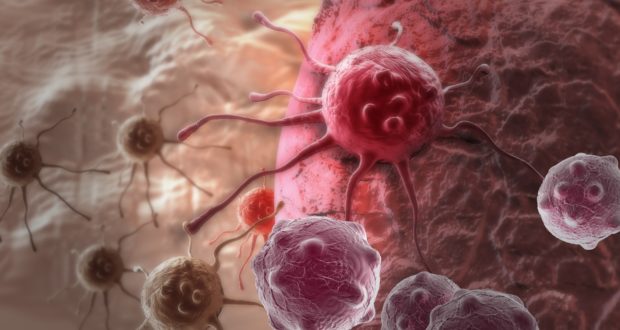Everyone is aware of Mother’s Day and Father’s Day, but did you know that Grandparents have their own day as well? Yep, it’s true – since 1978, September 8th has been officially been designated as “Grandparent’s day.” There is certainly good reason for this holiday, as there are an estimated
70 million grandparents in the United States. In other words, nearly one-third of American adults have grandchildren.
Seniors obviously want to see their grandchildren grow up for as long as possible. Unfortunately, the human body can only hold out for so long against the forces of aging. Further compounding this problem are the many health problems facing senior citizens. A combination of poor lifestyle choices, bad luck, genetics and the natural effects of aging can all work to cut short the lives of seniors. Below are some of the biggest obstacles that confront grandparents in their later years, and what can be done to mitigate their effects.
Arthritis
Another telltale sign of aging is the onset of arthritis, a condition in which the body’s joints become stiff and painful. Believe it or not, there are actually over 100 different forms of arthritis, though there are a few types of arthritis that are especially prevalent. Osteoarthritis develops after the joint’s cartilage begins to slowly wither and deteriorate. Given that cartilage functions as a cushion between opposing bones, cartilage erosion inevitably causes the bones to grind up against each other, causing a great deal of pain.
Rheumatoid arthritis, in contrast, can be blamed on your body’s own immune system. Specifically, the body’s defenses began to view the joint’s tissues as a hostile threat, and react by attacking the joint’s synovium tissue. This causes much swelling and pain within the afflicted joint.
Seniors with osteoarthritis can mitigate their symptoms by making a few changes in lifestyle. For example, doctors often help arthritis patients craft personal exercise routines, consisting of stretching, aerobic and strength training exercises. A routine featuring such activities can make joints less stiff and painful, while bolstering the surrounding muscles. Likewise, a
healthy diet can help seniors shed extra pounds, lessening the burden placed on the joints.
When it comes to medicinal treatments for osteoarthritis, many patients use either NSAIDs (nonsteroidal anti-inflammatory drugs) or acetaminophen. Over-the-counter NSAIDs and acetaminophen treat arthritic pain alone, whereas prescription NSAIDs can be useful in alleviating both pain and inflammation. These medications are not without risk; acetaminophen can damage the kidneys and liver, while NSAIDs may trigger stomach bleeding and increase heart attack risk. Because of these potential side effects, seniors with osteoarthritis should seek the input of medical professionals when considering such medications.
Treating rheumatoid arthritis requires a different approach. Patients are typically first advised to take medicines with relatively few side effects; should these prove to be ineffective, doctors then prescribe more potent medications. As with osteoarthritis, both over-the-counter and prescription NSAIDs may be used to treat this condition. In addition, rheumatoid arthritis patients are often prescribed DMARDs (diseasemodifying antirheumatic drugs), which work to slow down the rate of joint damage caused by the disease. Some patients may need to take a certain combination of DMARDs to see results. A third treatment option is corticosteroids, which are often used on a short-term basis to counteract
inflammation and joint damage.
Cancer
Americans are well acquainted with cancer, as this disease claims over half a million lives in the United States every year. Many of these victims are senior citizens, who are often susceptible to breast, cervical and prostate cancer. In order to detect these cancers at an early stage, many older adults undergo cancer screenings on a regular basis. Though these tests are commonplace, there is still much debate regarding cancer screening
procedures. A good example of this lack of consensus involves prostate cancer screenings. Some professional organizations contend that men aged 40 to 75 are generally best served by getting tested; others believe that men should discuss the issue with their doctors before reaching a decision.
There is also some disagreement regarding mammograms, which are used to detect breast cancer before it reaches its more advanced stages. The American Cancer Society advises women to get their first mammogram at age 40, and to get follow-up mammograms every year (provided they are in good health). However, a report issued by the U.S. Preventive Services Task Force reached a different conclusion, arguing that average risk women should wait to the age of 50 to get their first mammogram. Furthermore, the same report stated that women should undergo this screening every two years, and should cease getting mammograms after the age of 74.Cervical cancer is another disease that affects significant numbers of women. Guidelines regarding cervical cancer screenings are listed below:
- All women should begin getting cervical screenings at age 21Women between the ages of 21 and 29 should undergo a Pap smear every three years. They should not be tested for HPV unless it is needed after an abnormal Pap test result.
- Women between the ages of 30 and 65 should have both a Pap test and HPV tests every five years. This is the preferred approach, but it is also okay to have a Pap test alone every 3 years.
- Women over age 65 who have had regular screenings with normal results should not be screened for cervical cancer. Women who have been diagnosed with cervical pre-cancer should continue to be screened.
- Women who have had their uterus and cervix removed in a hysterectomy and have no history of cervical cancer or pre-cancer should not be screened.
- Women who have received the HPV vaccine should still follow the screening recommendations for their age group
- Women who are at high risk for cervical cancer may need to be screened more often.
- Women at high risk might include those with HIV infection, organ transplant, or exposure to the drug DES. They should talk with their doctor or nurse.
Cardiovascular Disease (CVD)
If you want to know how prevalent heart problems are amongst the American adults, simply check the top causes of death compiled by the Center for Disease Control and Prevention (CDC). In 2016, heart disease was the leading cause of death in the United States, taking some 633,842 lives. Several conditions that fall under the umbrella of cardiovascular disease, many of which are:
- Coronary Artery Disease
- Arrhythmia
- Heart Failure/Heart Attack
- Congenital Heart Disease
- Vascular Disease
- Pericardial Disease
- Aorta Disease
While medications are often prescribed to treat CVD, patients are also urged to implement changes related to lifestyle and diet. Foods that are loaded with salt, cholesterol and saturated fat can adversely affect both a patient’s cholesterol and blood pressure levels. Consequentially, seniors with cardiovascular disease should avoid them as much as possible. By the same token, an appropriate exercise regimen can also be very helpful to seniors concerned about their heart health. However, it is crucial for all individuals with cardiovascular disease to consult with a doctor before beginning an exercise program.
 Natural Knowledge 24/7 Educate yourself with nutrition, health and fitness knowledge.
Natural Knowledge 24/7 Educate yourself with nutrition, health and fitness knowledge.






